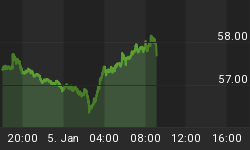The great money-making investors are famous for frequently making big calls against common wisdom. Good case in point is when Warren Buffett scooped up Goldman Sachs (NYSE:GS) for a song in the midst of 2008's subprime crisis. That investment has nearly tripled and remains one of Buffett’s top "buy when others are fearful" trades.
It turns out another group of wealthy investors have bought into Buffet’s wisdom: High net worth investors have been going against the grain since the infamous stock market crash in March.
According to the Addepar Investment Sentiment Index, high-net-worth and ultra-high-net-worth investors were net buyers of U.S. equities when the market bottomed from its Covid-induced rout in March, but have since then been consistent net sellers as the benchmark rebounded.
The Addepar Investment Sentiment Index measures the relative share of sophisticated investors that are net buyers of U.S. stocks versus those who are net sellers or net neutral. Unlike traditional gauges of investor sentiment, the index monitors actual investment activity across more than 10,000 portfolios, each with at least $10 million in total assets instead of simply relying on survey results.
Will these contrarian investors be rewarded for going against the herd? Let’s find out.
Timeline matters
The million-dollar question here is whether investors should favor stocks that have outperformed the market or those that have been laggards.
It all depends on the time horizon:
- Over very short time spans of up to a month, momentum tends to be negatively correlated with returns. In other words, stocks that performed well last month are likely to do poorly this month
- Over the mid-term of 2 to 12 months, momentum turns positive. Stocks that performed well in that time horizon continue to outperform while those that underperformed continue being laggards
- Over long time horizons of 2-5 years, momentum turns negative again. Past winners become tomorrow’s losers and vice-versa
There are a couple of plausible reasons why stocks that outperformed the market over the prior year continue to excel over subsequent months.
- Major stock buyers such as institutions tend to scale in and out of positions slowly. This behaviour tends to build momentum in certain stocks.
- Equity prices usually do not immediately adjust to new information about a company. For instance, a company’s stock typically continues to outperform in the days after a good earnings report and drifts lower in the following days after a bad one.
- There’s something called the disposition effect in behavioral finance. What it means is that investors tend to be reluctant to realize losses by selling stocks that have declined below their initial purchase price, but are much quicker to sell winning stocks in order to lock in gains. Due to this investor tendency, stocks don’t usually get to their intrinsic value quickly…it usually takes time, leading to momentum.
So, contrarian investing can definitely be a sound investment strategy and is preferable to other strategies that wealthy investors have been engaging in as we shall see shortly.
Hoarding cash
Last year, a survey by the world’s largest wealth manager, UBS AG, found that high-net-worth portfolios were, in aggregate, 32 percent in cash. Asia’s and Latin America’s wealthy were the most guilty of hoarding cash, with 36 percent of their portfolios liquid, with the majority of Asian investors fearing a trade war fallout while Latin Americans are more concerned with high levels of inflation (never mind that cash is a poor inflation hedge).
Related: Dead Malls Could Be Amazon’s Next Target
Cash is considered a safe asset for a liquidity strategy especially during times of economic uncertainties or high volatility. Experts have repeatedly warned that a full-blown trade war between the U.S. and China could result in a significant slowdown for a global economy that’s already on the skids.
That said, these risk-averse high-net-worth individuals could be missing out on an opportunity to enjoy even better returns on their portfolios.
There are no hard and fast rules regarding the cash threshold for an average portfolio. Academic evidence, however, suggests that the maximum risk/return trade-off occurs when cash constitutes somewhere between 10-20 percent of a portfolio. Indeed, for long-term investors with a horizon exceeding 10 years, cash levels in excess of five percent can lead to a notable performance drag.
This applies across all portfolio sizes and not just large ones.
Asian mutual funds have been underperforming the region’s equity markets due to overly conservative positioning, including defensive positioning in underperforming South Asian markets as well as consumer sectors.
Strategies to Protect your Portfolio
There are a couple of strategies that investors can employ to protect their portfolios and preserve capital.
Safe haven commodities like gold and silver can be a useful hedge against higher prices and a weaker dollar.
Including TIPS (Treasury Inflation-Protected Securities) in your portfolio can also serve as an effective inflation hedge. TIPS also perform well during times of falling interest rates. The long-duration iShares TIPS Bond ETF (TIP) is up 9 percent over the past 12 months.
By Alex Kimani for Safehaven.com
More Top Reads From Safehaven.com:
















